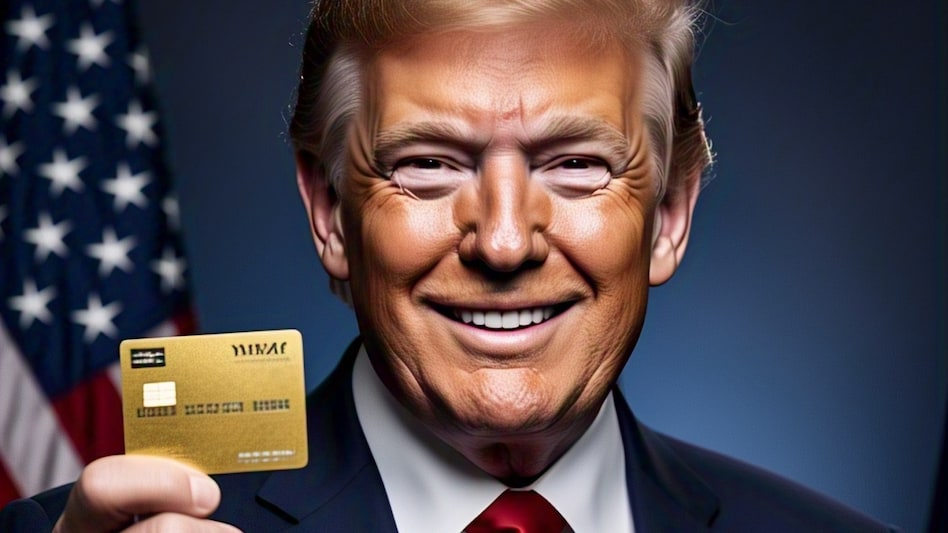President Donald Trump has introduced a bold new immigration proposal aimed at wealthy foreign investors. Announced at the Oval Office on Tuesday, the proposal aims to replace the current EB-5 investor class visa program with a very high cost equivalent “gold card. The proposed route to U.S. citizenship would allow people to avoid everyday immigrant obstacles by simply making a single payment of $5 million.
Gold Card: A Premium Route to U.S. Residency
Trump’s gold-card plan is targeted to entice economically privileged people who are able to pay dearly for U.S. residency. We’re gonna be selling a gold card,” Trump said. It will cost about $5 million to put a price on that card.
This announcement represents a major departure from the current EB-5 investor visa program that demands foreign investors to invest a considerable amount of money into U.S. businesses that create or retain jobs. In the proposed system, investors did not require to set up their businesses or to do the jobs. However, permanent residence (and citizenship) would be earned by paying a specific fee upon the setting of this deadline.
Green Card: The Traditional Path to Residency
The U.S. green card, which has been used for decades, is the regular type of status authorization for nonimmigrant aliens who want to receive permanent residency. Compared to the gold card proposal, the green card process is much more complicated and entails several stages of applications, checks, and, in general, a sponsorship through employment, family members or investment.
The history of green card can be traced all the way back to the 1940 Alien Registration Act. According to the U.S. Citizenship and Immigration Services (USCIS), “The first receipt cards were printed on Form AR-3 on white paper and were the result of the Alien Registration Act of 1940. The act was passed in response to the start of World War II, requiring all non-citizens in the U.S. to register with the federal government. The green card system has developed over time in a demanding, yet universally reach process for permanent residence.
Gold Card vs. Green Card: Key Differences
Although the gold card and the green card both provide lawful permanent residence in the US, there are substantial differences in their paper work requirements and eligibility criteria.
1. Cost and Process
- The gold card could be purchased for a single payment of $5 million, by which the more discretion would be afforded patients to sidestep the typical visa restrictions.
- In contrast, obtaining a green card involves a lengthy application process, requiring sponsorship, background checks, and, in some cases, a wait time of several years.
2. Historical Context
- The “green card” has been an integral part of U.S. immigration policy for more than 80 years and is based on legislation enacted during WWII.
- In contrast, the gold card is a new idea without any proof of concept and proposed as a mechanism to modernize and simplify investors’ access to immigration for high-net-worth individuals.
3. Investor Appeal
- The EB-5 program has long been the method of choice of high-net-worth investors who want to obtain U.S. permanent residency by creating jobs.
- Trump’s gold card is going to take away the job-creation requirements, turning it into a special type of pay-to-stay visa for the ultra-rich customers.
Potential Impact and Controversy
With the advent of gold card visa, there is controversy regarding its fairness and consequences. Critics claim that the proposal may result in an immigration system that further helps the wealthy and become even more challenging for highly skilled professionals and middle-class investors to obtain permanent residence.
In addition, as the proposed change may disproportionately affect applicants from countries such as India, in which skilled professionals are, in fact, already subject to long processing times for obtaining a green card. According to the current EB-5 program, the investors may either take the loan or pool the funds, but, according to the gold card visa, one has to pay the full amount upfront, which is difficult for most.
But gold card proponents counter that it would draw economic contributors like no other, through taxes and investment to the US economy. Trump himself emphasized that the plan would bring in “wealthy and successful people who will be spending a lot of money and employing a lot of people.
Conclusion
The gold card proposal represents a dramatic shift in U.S. immigration policy, prioritizing financial investment over traditional routes based on employment and family sponsorship. Although it might promise to generate revenue and attract high-net-worth immigrants, it also generate questions about fairness and equity in the immigration system. If implemented, the gold card visa could redefine the landscape of U.S. residency for years to come, favoring the super-rich while leaving other hopeful immigrants to navigate the traditional, often lengthy, green card process.
“Stay updated with the latest news and insights – follow us at YPBB News on X for real-t
